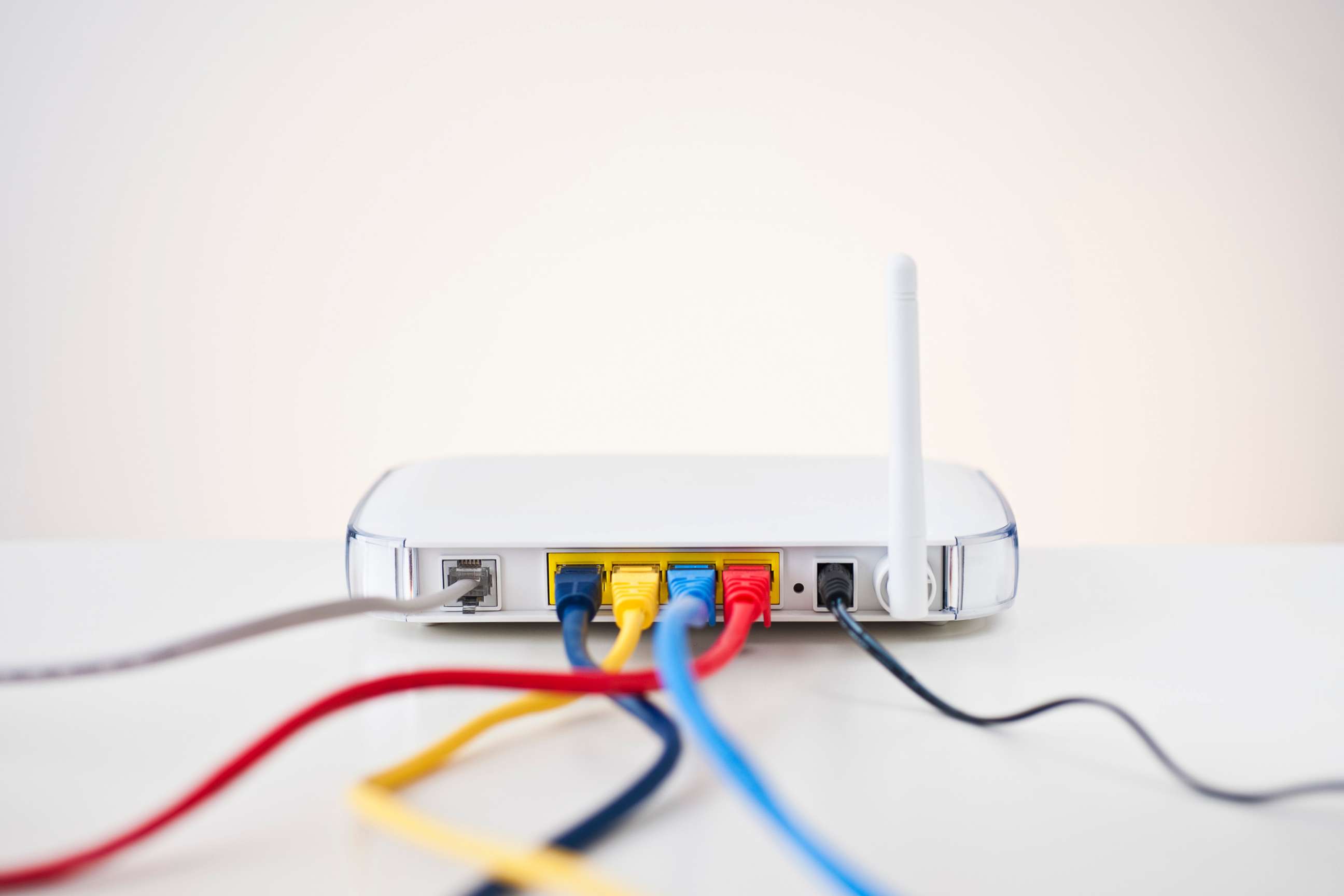Best tech for working from home during coronavirus pandemic
Tech tips that can help make remote work setup a lot easier.
This story was created in collaboration with Digital Trends.
As confirmed coronavirus cases increase in the U.S., more businesses are mandating employees work from home.
With the ubiquity of mobile devices and most business applications available through cloud services, transitioning the bulk of work from the office to home is a relatively easy process for most. Still, as COVID-19 rages on and more businesses ask employees to work remotely, here are a few tech tips to follow that can help make remote work setup a lot easier.
Best tech and tips for working at home amid coronavirus:
Get your Wi-Fi in order
Since most devices now connect wirelessly, your experience working from home will depend a lot on your Wi-Fi performance. A lot of devices competing for throughput on one network can cause internal traffic issues and downgrade performance when working remotely.
If you’ve had the same router for more than five years, now may be a good time to upgrade. Newer routers offer dual- and tri-band wireless networks. With newer, multi-band routers you can segment your wireless network into two networks: 2.4 GHz and 5 GHz.
The 5 GHz network is a faster, broader wireless band with less interference and ideal for connecting to when accessing business applications, teleconferencing or transferring large files. Many newer Wi-Fi routers are also good at negotiating the wireless throughput usage of devices on your home network, and you can often tell them which devices should get priority throughput.
At the very least, whether your Wi-Fi router is old or new, it’s a good idea to go into the router’s management software and ensure it's running the latest firmware, which can help improve the router’s software and also can update any security flaws.
Related Stories
Boost your Internet
How fast or slow an Internet connection depends on the service and level of service a customer has from their Internet Service Provider.
Before an extended work-at-home period, check the level of service you currently have with your ISP, especially if you don’t know. You'll want to know your plan's upload and download speeds, particularly if your work involves teleconferencing, large file sharing, video editing and other bandwidth-intensive tasks.
If you think you may need more bandwidth to work from home, now may be a good time to renegotiate your service plan. AT&T recently announced it was temporarily halting caps on broadband service for all of its customers, as more people work from home.
Secure your home network
Make sure all devices on your home network including the ones you use for business have the latest software updates (which often contain critical security patches) and also update any anti-virus software.

Get yourself a USB dock or hub
If you use a desktop PC at home, then you might already have everything you need. Desktops tend to be more powerful than laptops, offer the ability to connect more displays, and provide greater connectivity options. The biggest question is: Does your company allow you to connect to corporate resources using a personal PC? If it doesn’t, then you’ll either need to get permission or use a company-issued PC, most likely a laptop.
The problem is that modern laptops like the Dell XPS 13 or MacBook Pro don’t offer many ports. Fortunately, if you have a work-issued laptop (particularly one with one or more Thunderbolt 3 ports), you’re still in luck. While the laptop itself might be relatively limited in terms of connectivity, it’s relatively easy to set up a home office with all of the connectivity you need -- including multiple displays for productive multitasking, and even 4K displays to make the best use of all that real estate. What you need is a dock or USB hub.
If your laptop doesn’t have a Thunderbolt 3 port but has USB-C, you need a hub. A simple USB-C hub will give you extra USB-A ports for your old external hard drive or mouse, or even an HDMI port for displays. There are dozens of good options online, all of which allow you to connect to additional displays — you’ll just be limited in the number and their resolution.
If your laptop has Thunderbolt 3 (marked by the small Thunderbolt logo by the port), your options grow considerably. Typically, Thunderbolt 3 allows up to two 4K displays at 60Hz, while USB-C is limited to two 1080p displays. You can also daisy-chain monitors or accessories together, for up to six devices.
Buy the right monitor
It’s easy enough to connect multiple displays to your laptop if you have Thunderbolt 3 or USB-C. And there’s not much you can do that has a more immediate impact on your productivity — attach a couple of 4K displays at 27 inches or larger and, suddenly, your laptop becomes a productivity powerhouse.
If you’re using a laptop, there are endless options for how to set up your layout. You can prop it up on a stand, or, for an ultra-clean desk, you can even purchase a vertical laptop stand and leave your laptop closed while using it.
While you’re at it, get familiar with how Windows 10 works with split screens and multiple displays (or Mac, if that’s your platform). Your display might also have its own built-in tools for carving up the screen real estate to make it easier to manage multitasking.
What to know about Coronavirus:
- How it started and how to protect yourself: Coronavirus explained
- What to do if you have symptoms: Coronavirus symptoms
- Tracking the spread in the US and Worldwide: Coronavirus map
Choose the right webcam and headset
Working from home means a lot more video calls. Teams like to see each other when they collaborate, meaning you’ll want a good webcam and headset to make for a comfortable quality experience. Using your built-in webcam and basic headphones should work well enough, but if you want to upgrade the experience, investing in a webcam or headset is a good idea, especially if you’re working at larger monitors.
Your keyboard and mouse matter, too
Investing in a good external keyboard and mouse will do wonders for your workspace. Not only are these input devices more versatile than your laptop’s built-in options, but they’re also often more comfortable to use as well.
If you want to upgrade to a mechanical keyboard, they are many options for both gaming and typing. Just make sure the volume of the typing won’t bother your family or roommates.
For more work-at-home tips and tech product recommendations to set up a home office for remote work, check out Digital Trends' full story.
ABC News' Catherine Thorbecke contributed to this report.




